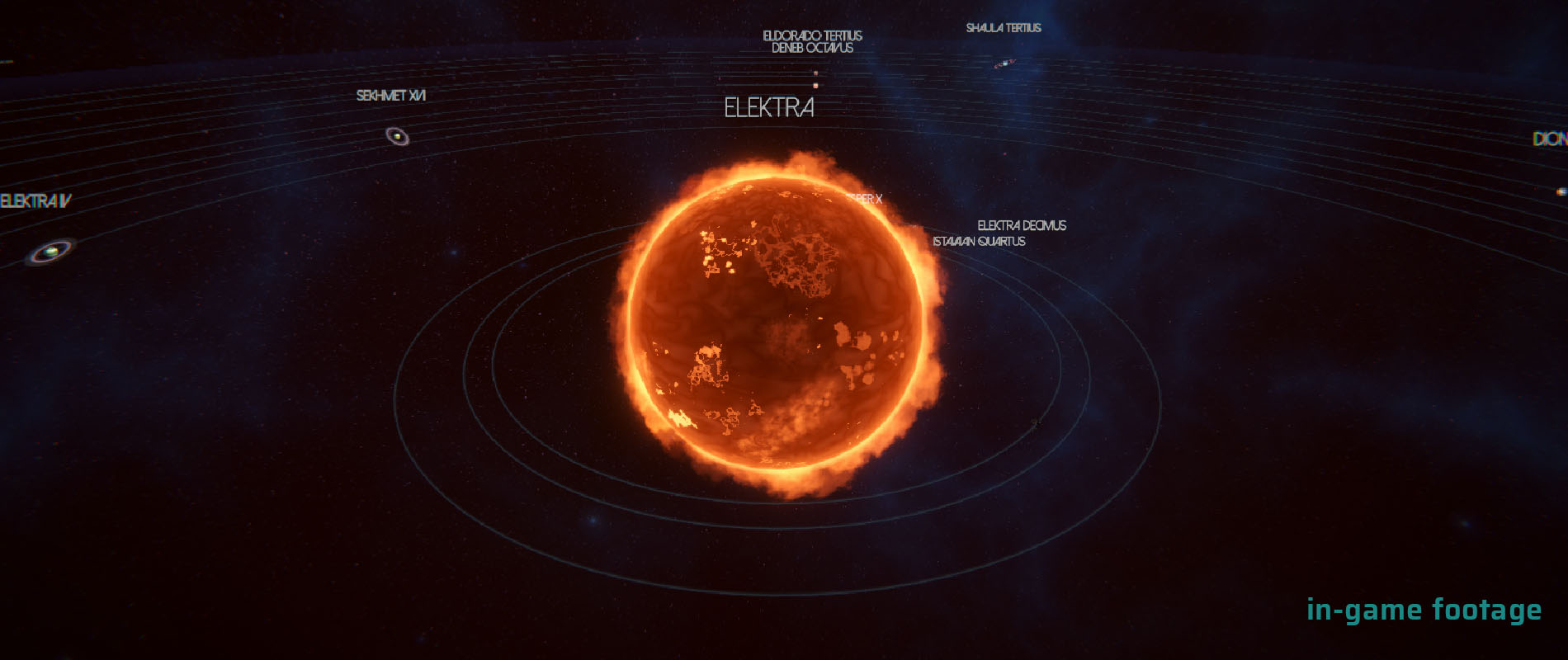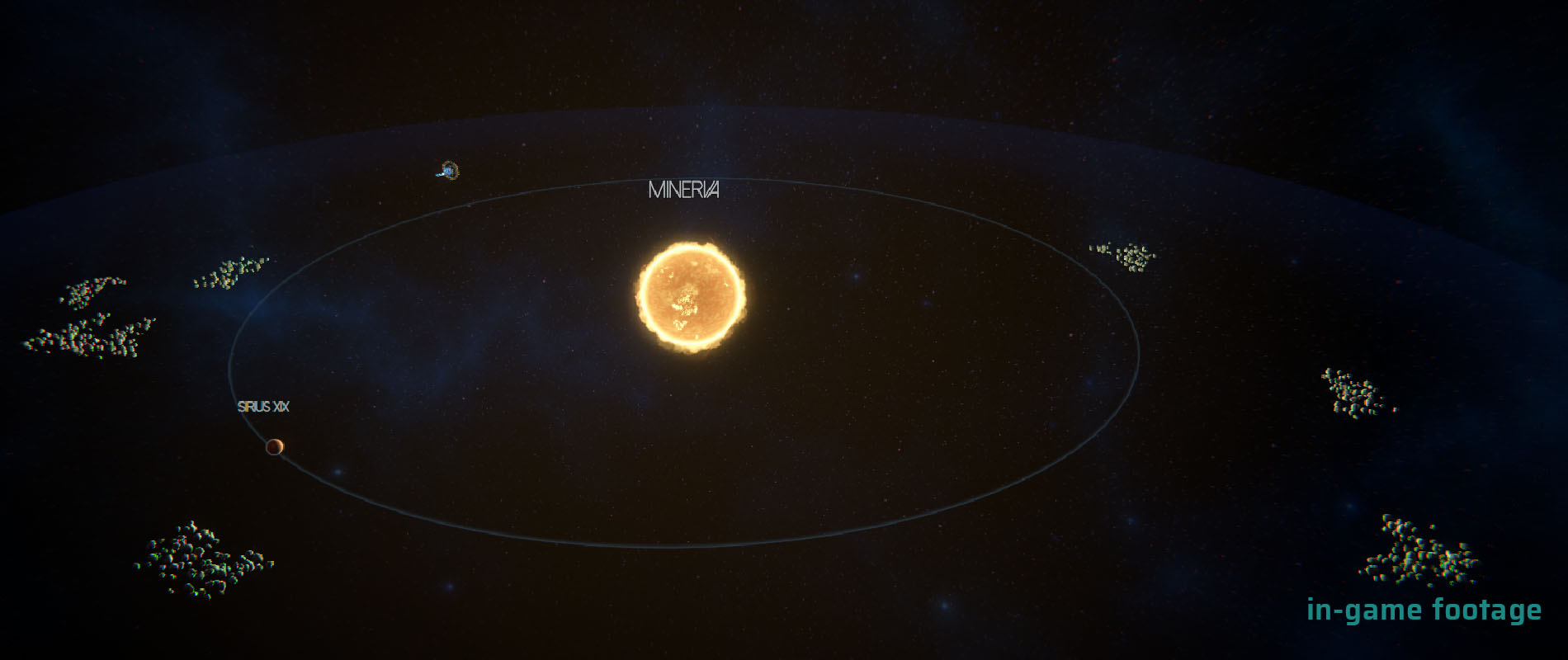Resource System Upgrade and Procedural Solar Systems
Hello there, fellow game developers and fans! It has been quite an exciting week filled with fascinating tweaks and changes to our space exploration project.
improving the resource management system
Our adventure started by improving the mechanics of our resource management system. As you know, this is a core component of our game where players must keep track of available quantities, monitor their consumption, and harvest even more resources to keep their crew and ship operating. We dove deep into the intricacies of c#, crafting classes and subclasses that represent the various types of resource consumption and harvesting in our game. We are ramping up our base system, which reveals itself quite flexible, where everything from power to exotic metals is considered a resource with its own consumption or harvesting behavior.
One of the main challenges we faced was designing a system that accommodates both continuous resources that can be harvested over time and one-time resources that are obtained instantly. We decided to extend the existing concept of ‘Resource Nodes’ since they are designed to be interacted with by the player, but can also be managed by the game, thus allowing for a more diverse and engaging gameplay.
A significant portion of our time was dedicated to implementing and refining an upgrade over our existing modifier system, in order to make it more dynamic. This allows us to manipulate resource consumption and harvesting rates based on different factors within the game, creating a more active and responsive gameplay experience. Modifiers can now be temporary or permanent, and we can apply multiple modifiers at once to a resource type. This adds an extra layer of strategy to resource management in the game.
A step further on Procedural Solar Systems
The most visually captivating part of this week’s progress, however, was undoubtedly the procedural generation of solar systems. We took our procgen system prototype one notch further and modified it to allow us to generate a complete solar system, filled with planets and moons. Plus, these celestial bodies are not static, they rotate around their axes and orbit around the central star(s), creating a realistic and immersive space environment!
We faced some challenges in preventing planets and moons from spawning too close to each other or in perfect alignment. After several iterations, we managed to improve the generation algorithm to create a more scattered and natural-looking solar system.
Finally, to enhance the visual feedback, we implemented the generation of orbital paths around each planet. This proved to be trickier than expected, but after a few tweaks and debugging, we managed to create a mechanism where orbit paths are generated around their respective celestial bodies, giving players a clear indication of the motion of each planet and moon.
This work served as a reminder of how much goes into creating an immersive, dynamic, and engaging game. We’re excited about the progress we’ve made and can’t wait to continue improving and expanding our game. Keep an eye out for future devlogs as we continue our journey through the stars!
Signing off for now, your dev team.
Resource System Upgrade and Procedural Solar Systems
Hello there, fellow game developers and fans! It has been quite an exciting week filled with fascinating tweaks and changes to our space exploration project.
improving the resource management system
Our adventure started by improving the mechanics of our resource management system. As you know, this is a core component of our game where players must keep track of available quantities, monitor their consumption, and harvest even more resources to keep their crew and ship operating. We dove deep into the intricacies of c#, crafting classes and subclasses that represent the various types of resource consumption and harvesting in our game. We are ramping up our base system, which reveals itself quite flexible, where everything from power to exotic metals is considered a resource with its own consumption or harvesting behavior.
One of the main challenges we faced was designing a system that accommodates both continuous resources that can be harvested over time and one-time resources that are obtained instantly. We decided to extend the existing concept of ‘Resource Nodes’ since they are designed to be interacted with by the player, but can also be managed by the game, thus allowing for a more diverse and engaging gameplay.
A significant portion of our time was dedicated to implementing and refining an upgrade over our existing modifier system, in order to make it more dynamic. This allows us to manipulate resource consumption and harvesting rates based on different factors within the game, creating a more active and responsive gameplay experience. Modifiers can now be temporary or permanent, and we can apply multiple modifiers at once to a resource type. This adds an extra layer of strategy to resource management in the game.
A step further on Procedural Solar Systems
The most visually captivating part of this week’s progress, however, was undoubtedly the procedural generation of solar systems. We took our procgen system prototype one notch further and modified it to allow us to generate a complete solar system, filled with planets and moons. Plus, these celestial bodies are not static, they rotate around their axes and orbit around the central star(s), creating a realistic and immersive space environment!
We faced some challenges in preventing planets and moons from spawning too close to each other or in perfect alignment. After several iterations, we managed to improve the generation algorithm to create a more scattered and natural-looking solar system.
Finally, to enhance the visual feedback, we implemented the generation of orbital paths around each planet. This proved to be trickier than expected, but after a few tweaks and debugging, we managed to create a mechanism where orbit paths are generated around their respective celestial bodies, giving players a clear indication of the motion of each planet and moon.
This work served as a reminder of how much goes into creating an immersive, dynamic, and engaging game. We’re excited about the progress we’ve made and can’t wait to continue improving and expanding our game. Keep an eye out for future devlogs as we continue our journey through the stars!
Signing off for now, your dev team.


